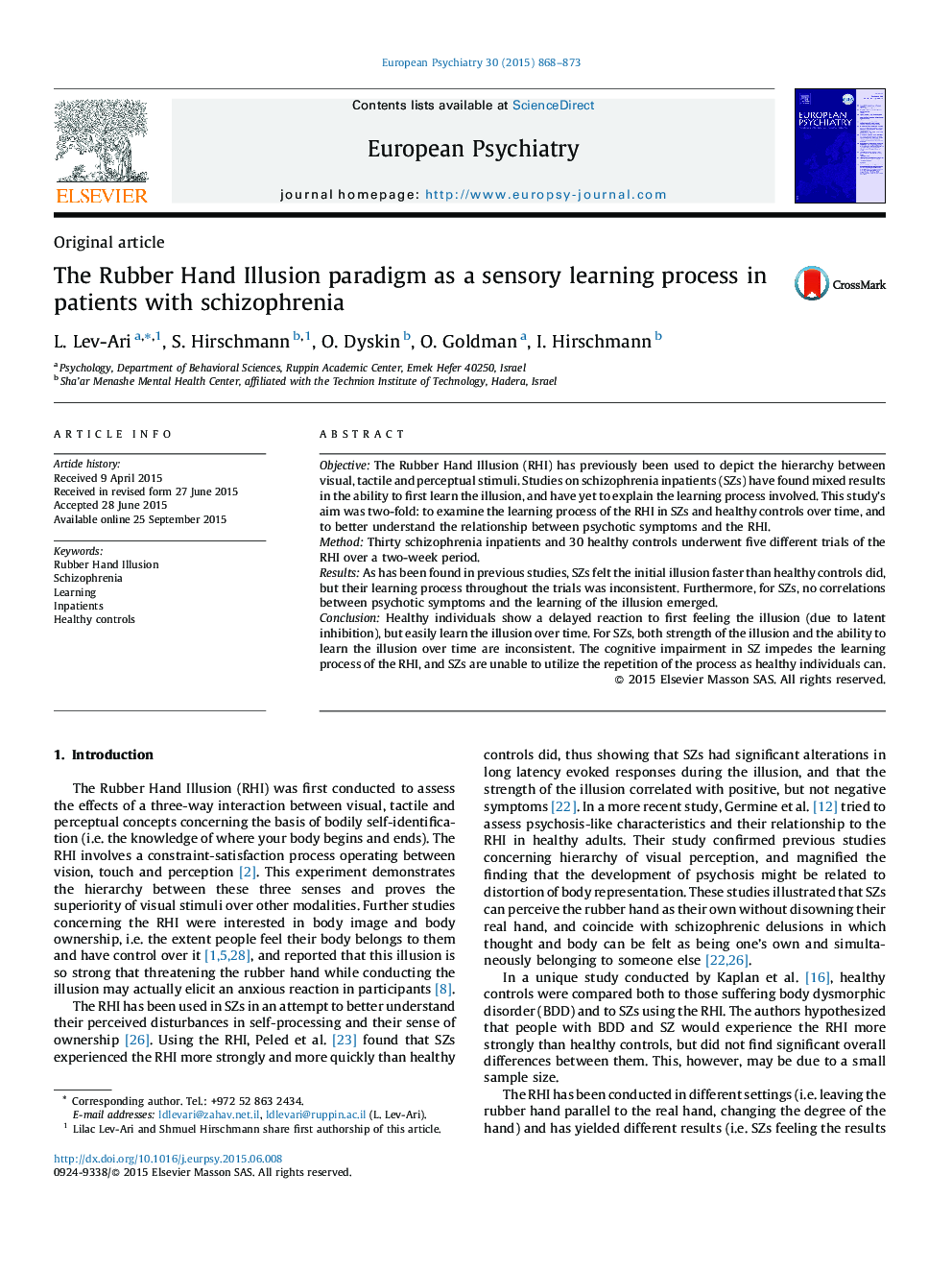| Article ID | Journal | Published Year | Pages | File Type |
|---|---|---|---|---|
| 4183714 | European Psychiatry | 2015 | 6 Pages |
ObjectiveThe Rubber Hand Illusion (RHI) has previously been used to depict the hierarchy between visual, tactile and perceptual stimuli. Studies on schizophrenia inpatients (SZs) have found mixed results in the ability to first learn the illusion, and have yet to explain the learning process involved. This study's aim was two-fold: to examine the learning process of the RHI in SZs and healthy controls over time, and to better understand the relationship between psychotic symptoms and the RHI.MethodThirty schizophrenia inpatients and 30 healthy controls underwent five different trials of the RHI over a two-week period.ResultsAs has been found in previous studies, SZs felt the initial illusion faster than healthy controls did, but their learning process throughout the trials was inconsistent. Furthermore, for SZs, no correlations between psychotic symptoms and the learning of the illusion emerged.ConclusionHealthy individuals show a delayed reaction to first feeling the illusion (due to latent inhibition), but easily learn the illusion over time. For SZs, both strength of the illusion and the ability to learn the illusion over time are inconsistent. The cognitive impairment in SZ impedes the learning process of the RHI, and SZs are unable to utilize the repetition of the process as healthy individuals can.
